Radios and 20th-Century Decorative Arts
December 11th, 2012
|
Shown is a circa 1942 Fada 188 All American in a yellow case with blue knobs and handle with a red wraparound grill and Fada decal, 5½" high x 9" long x 5 ½" deep, that sold for $16,250 (est. $6000/9000). Another Fada 188 (not shown) in an orange-yellow case with red handle and knobs with a blue wraparound grill and the base with a Fada label, the same size as the yellow, sold for the same price (est. $6000/9000). A Fada 188 All American (not shown) in a marbleized brown case with red handle and knobs and yellow wraparound grille, its base with a paper label and backplate with a Fada-Scope label, sold for $17,500 (est. $8000/10,000).
Pictured is a Motorola 51X16 S Grille radio in a yellow case with matching knobs and a red faceplate and handle, circa 1941, 6" high x 9 3/4" long x 5 3/4" deep, that sold for $11,250 (est. $2500/3500). Another of the same design (not shown) but in a black case with matching knobs and a red faceplate and handle sold for $4000 (est. $3000/4000), and one in a yellow case with a green faceplate and handle sold for the same price (est. $2000/3000).
Tom Thumb radio in a cherry red case with matching knobs and with a Tom Thumb decal, circa 1939, 5" high x 7 3/8" long x 3 7/8" deep, sold for $21,250 (est. $10,000/15,000). |
Bonhams, New York City
Photos courtesy Bonhams
Bonhams 20th-century design sales on December 11, 2012, began with the Richard Balsbaugh collection of vintage 1930’s and 1940’s radios made of brightly colored Catalin plastic. They were offered in a separate catalog that provoked worldwide response. The sale of 133 Art Deco radios brought a total of $555,437, double the presale estimate, and was 100% sold!
Bonhams estimated the radios conservatively, and collectors competed in the salesroom, on line, and on the phones. The introduction in the catalog told how Richard Balsbaugh started in the radio business in 1972 as a salesman, quickly rose to sales manager, and then to manager. He went on to form his own company, Pyramid Communications, acquiring radio stations and updating their format and content. In 1996 he sold the firm for $300 million.
He began his radio collection in 1980 while on a business trip to Los Angeles. He was searching for a gift for his morning deejay and bought two Catalin Fada Bullet radios at Off the Wall Antiques, one for the deejay and one for himself. As a collector his criteria in selecting radios were condition first and then form and color. He was guided by Michael Lawlor, a dealer who wrote Lawlor’s Radio Values (1991).
Jon King masterminded the sale for Bonhams and said the market for radios is healthy. Collectors flew to New York City to select their lots. More than 50 people attended the sale, competing with phones and the Internet. King said there were bidders from Hong Kong, Australia, the U.K., and all parts of the U.S.
Six Art Deco Air King Skyscraper radios designed in 1933 by Harold Van Doren were among the top lots of the sale. There were two lavender examples: an Air King 770 with a reverse-printed broadcast dial and the tuning dial molded in relief, circa 1936, that sold for $31,250; and an Air King 52 with a clock dial, circa 1933, that sold for $10,625. A mint green Air King 52 with a world map dial sold for $37,500 (est. $12,000/15,000). The same price was paid for a Detrola 281 Split Grille with a marbleized yellow case and emerald green split grille and matching green knobs, circa 1939; it sold for more than three times its high estimate.
Bonhams’ 20th-century decorative arts sale, which followed at 1 p.m., was not as successful. There were some strong prices, but half the lots failed to sell, and only a few sold well over estimates. The sale reflected the soft middle market. Frank Maraschiello said, “People are not moving. They are not buying furniture, and the economy has not yet recovered enough to support a strong market.” There were pockets of success. There was interest in Art Nouveau sculpture and Art Deco figures. The Tiffany market was patchy; some contemporary studio crafts found buyers, although there was little interest in Italian glass and turned wood. The sale total came to $1,436,650, and there were some post-sale deals bringing the sell-through rate closer to 60%. The pictures and captions show some of the successes.
For more information, visit the Web site (www.bonhams.com).

An Air King Skyscraper 52 designed by Harold Van Doren in a mint green case with green-on-black knobs and a map of the world dial, circa 1939, 11¾" high x 8¾" wide x 6¾" deep, sold for $37,500 (est. $12,000/15,000). |
|
|
|
St. Mark’s was Louis C. Tiffany’s first commercial window commission. He provided about 30 windows for the apse, nave, and vestry of the church, designed by Richard Morris Hunt. William K. Vanderbilt and his wife, Alva Erskine Smith Vanderbilt, may have gotten him the commission. All the windows were made of pressed opalescent glass roundels of varying colors and hand-chipped chunk glass jewels. His first figural window was of St. Mark in 1878. Its present location is not known; the windows were replaced over the years and a fire destroyed the nave. A few of the original Tiffany windows had been stored in the basement and were saved, but the present location of most of them is not known. |
|
|
|
|
 A good Daum Nancy enameled cameo glass blackbird and frog vase, circa 1901, signed in gilt enamel “Daum Nancy” with the cross of Lorraine, 14¼" high, sold for $43,750 (est. $15,000/20,000). A good Daum Nancy enameled cameo glass blackbird and frog vase, circa 1901, signed in gilt enamel “Daum Nancy” with the cross of Lorraine, 14¼" high, sold for $43,750 (est. $15,000/20,000). |
|
|
Originally published in the March 2013 issue of Maine Antique Digest. © 2013 Maine Antique Digest












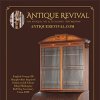




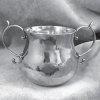



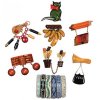
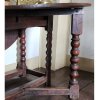


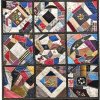


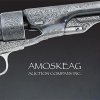
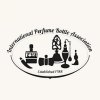


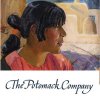



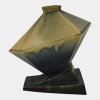
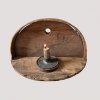
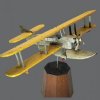






 An Air King Skyscraper 770 in a lavender case with flesh-colored knobs and a reverse-printed broadcast dial with the tuning eye molded in relief “Air King,” circa 1936, 11¾" high x 8¾" wide x 6¾" deep, sold for $31,250 (est. $4000/6000).
An Air King Skyscraper 770 in a lavender case with flesh-colored knobs and a reverse-printed broadcast dial with the tuning eye molded in relief “Air King,” circa 1936, 11¾" high x 8¾" wide x 6¾" deep, sold for $31,250 (est. $4000/6000). Two important Tiffany Studios leaded glass bull’s-eye roundel and chipped-glass windows designed for St. Mark’s church, Islip, Long Island, circa 1878, each 34½" high x 11½" wide, sold for $22,500 (est. $30,000/40,000).
Two important Tiffany Studios leaded glass bull’s-eye roundel and chipped-glass windows designed for St. Mark’s church, Islip, Long Island, circa 1878, each 34½" high x 11½" wide, sold for $22,500 (est. $30,000/40,000). Rookwood Pottery electro-deposit copper-plated glazed earthenware dragon vase, 12¾" tall, designed by Kitaro Shirayamadani, circa 1898. The background is decorated with billowing clouds. It has an impressed Rookwood flame mark and “807” and a partial incised artist’s Japanese calligraphic signature. Even though it had been drilled for a lamp, it sold for $20,000 (est. $4000/6000). Shirayamadani was responsible for developing the important electro-deposit technique for Rookwood, circa 1893, and perfecting it circa 1898. It has been used on some of his finest work.
Rookwood Pottery electro-deposit copper-plated glazed earthenware dragon vase, 12¾" tall, designed by Kitaro Shirayamadani, circa 1898. The background is decorated with billowing clouds. It has an impressed Rookwood flame mark and “807” and a partial incised artist’s Japanese calligraphic signature. Even though it had been drilled for a lamp, it sold for $20,000 (est. $4000/6000). Shirayamadani was responsible for developing the important electro-deposit technique for Rookwood, circa 1893, and perfecting it circa 1898. It has been used on some of his finest work. Johann Philipp Ferdinand Preiss (German, 1882-1943), Gamine, cold-painted bronze, carved ivory, and onyx, inscribed “F. Preiss,” 13 5/8" high, sold for $27,500 (est. $10,000/15,000).
Johann Philipp Ferdinand Preiss (German, 1882-1943), Gamine, cold-painted bronze, carved ivory, and onyx, inscribed “F. Preiss,” 13 5/8" high, sold for $27,500 (est. $10,000/15,000). Dale Chihuly (b. 1941), Blanket Cylinder, 1989, blown and applied glass, inscribed “Chihuly ’89,” 17¼" high x 13 3/8" in diameter, sold for $25,000 (est. $15,000/20,000).
Dale Chihuly (b. 1941), Blanket Cylinder, 1989, blown and applied glass, inscribed “Chihuly ’89,” 17¼" high x 13 3/8" in diameter, sold for $25,000 (est. $15,000/20,000).



